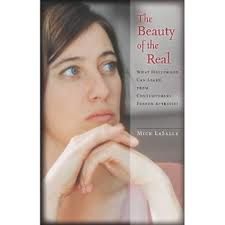Film, Movie or Cinema, S’il Vous Plait
Mainstream Hollywood is stale. Why see one movie over another? With downloads, streaming and a decent television, we face an overwhelming number of choices of similar items. They are distinct identities, thanks to marketing, but they are very much the same. After being sorted into recognizable categories: Action, Romantic Comedy, Sci-Fi, Drama – with a little reflection we know what each film within the category will offer. The straight jacket of genre offers endless variations on what we, at deeper level, know all too well. Why do to the two cops bicker before realizing that they are deeply bonded? Why must the aspiring lover run to the object of their love five to eight minutes before the final credits? If the scientists get excited about the prospects of their innovation, why do we know that it will go terribly wrong? After so many models of basically the same thing, can a movie do more than deliver the expected?
The one category that defies categorization is foreign, for foreign films are more than different. It takes effort to explore foreign films, above and beyond language, for the films do not fit our understanding of genres and categories. They are unfamiliar in every sense of the word. I am curious, but a mixture of wariness and contrariness limits my exploration, for a surefire way of making me cringe internally is to order me to see a movie. There’s absolutely no good reason to burden watching a film with an obligation.
Mick LaSalle, film critic for the San Francisco Chronicle, understands this all too well. His disappointment with the familiar, however, is tempered with a deep enthusiasm for foreign films, especially the movies of France. He wants to be a guide, but he does not hector. In his latest book, The Beauty of the Real, LaSalle walks us through contemporary French cinema by focusing upon actresses. Subtitled “What Hollywood Can Learn From Contemporary French Actresses,” the book chronicles the roles and films of twenty some actresses, mixing reviews with interviews and broader social commentary. It is a fascinating read, not only for what we learn of French cinema, but for what it reveals about Hollywood. Sometimes contrast is the fastest way to understanding.
LaSalle highlights the wide range of roles that women have in French cinema with energy and passion, but not without his critical eye. He does not claim that these are necessarily good or great films, but he makes a compelling case that they are interesting. It is the role of women, LaSalle argues, that highlights the difference of genre in the two cinemas. Beyond the American career arc (ingenue to lover to district attorney to matron), French actresses play roles that reflect broader choices in life. Stories may not resolve into moral messages. Old women may have sex. Young women may not find love. And within this wide array of lower budget cinemas, a wealth of different kinds of films blossom.
Finding French movies is a challenge. Distribution is spotty and once you locate a film, there is no guarantee that it will meet expectations. LaSalle has convinced me, though, that it is well worth the effort. Bonne chance. Now, speaking of films, who is Val in inventing Anna? Are you interested in the show’s intricate storyline and Val’s intriguing role? It makes it a must-watch for any entertainment enthusiast.